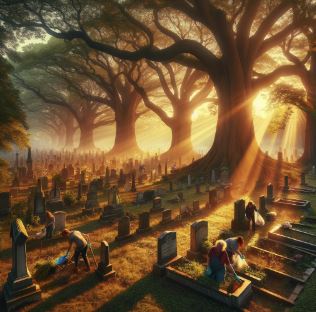I had planned to write about my decision to
obtain Certified Genealogist status but this week I discovered 3 special offers
so I’ve revised my plan to let you know what I found.
DEAL #1
If you aren’t a Legacy member, you may not know
that you can take advantage of their webinars; some cost, some are permanently
free and others free for just a limited time.
For a list of their archived webinars visit
I’m not a member of Legacy so I only watch the
free ones. I first learned about the webinars when I signed up for their
weekly email newsletter after I purchased Legacy software last Christmas as a
present to myself. I ended up with Legacy because I was so frustrated
with Family Tree Maker (FTM). My extremely large public “Main Tree” on
Ancestry.com stopped synching with my desktop FTM last May. I called FTM
customer service and they blamed Ancestry. Called Ancestry and they
blamed FTM. This went on for several weeks. I did what everyone
does when you call a call center and can't get help - hang up, wait a few
minutes and call again with the hope you'll get someone more
knowledgeable. Unfortunately, that didn't work, either. FTM reps
did sent me a useless email with instructions several times but it didn't
fix the problem. Next I posted on the Ancestry Message Boards asking
for advice. Surprise, surprise, discovered from the Message Board
that I wasn’t alone with the problem so I began to explore other family tree
software options. Looking at them seriously made me start pining for my
old PAF from Family Search! Since that’s no longer available, for a
temporary fix, I downloaded Legacy’s free family tree standard software
and was happy that it could quickly save my
Ancestry tree. I liked that it also gave me an error report. I just
wanted a product that would serve as a backup on my desktop in case I couldn’t
sign on to Ancestry but the more I used Legacy, the more I liked it so I
decided to buy the latest version. I haven’t really explored all of its
features yet which is on my to-do list. I am trying to download my
Ancestry tree monthly and save it to Legacy. After a weekend thumb drive
disaster, it’s something I really will make time to do on the first of every month
(Famous Last Words!) but that’s another story…
On Monday I listened to the passionate webinar
presentation by Bernice Alexander Bennett regarding her volunteer work at the
National Archives and took the challenge she mentioned. No spoilers here
– this is a must listen to training offered through May 1st! on Legacy so sign on for the 1 hour class “United States Colored Troops Civil War Widow’s
Pension Applications: Tell the Story.”
DEAL #2
The second special offer with a limited time is
that Fold3’s Civil War records are FREE for the month of April. If you
aren’t a paid member then you’ll really want to check this out by Thursday,
April 30th at 11:59 PM! You’ll have to register your
email at
but it’s well worth it. I stayed up way
too late last night but got all of my “close” Civil War records saved to
honor the 150 years since the war ended. This included my great great
grandfather Ferdinand Kable (Ohio Infantry Unit 29 Company A), 2 times great
uncles Thomas, Prosser, and Mark Duer, (Ohio 99th Infantry
Regiment, Company F), my husband’s great great grandfather Samuel August
Samuelson (Indiana Infantry Unit 73), and 2 times great uncle Thomas Charles
Thompson (Illinois 1st Light Artillery Battery). I also
saved records for several coworkers whom I’m working on their trees for my
Certified Genealogist portfolio.
Then I got totally side tracked and looked up
the War of 1812 pension records for my 3rd great grandmother,
Mary Polly Dennis Hodge Adams Elder Search. Yep, GGGGrandma outlived 4
husbands. Her first husband, John Hodge, died in combat and she was left
in 1813 with twin boys in the Ohio wilderness. And to think I thought
childcare was a nightmare when my kids were small; I can’t even imagine what
she went through! Her second husband, Edward Adams, whom I’m descended
from, died in 1822 leaving GGGGram with 5 kids. She then married Owen
Elder and after a 6th child, became a widow again in1830.
The pension records were under her last husband, William Search’s name. Someday
I plan on writing more about the hunt for Mary and her family.
DEAL # 3
Got an email from our friends at geneablogger
about an Ancestry.com contest to win a 6 month US Discovery Ancestry
membership. I don’t know what happens if you win and you’re already an
Ancestry member – I figure I’ll do a pay it forward and give it away or
negotiate with them for a discount. If you’re interested first go to
and click on “Look
inside” on the right hand side of your screen. You want to go to the back
of the book and write down the LAST PAGE NUMBER. Then, enter the contest:
http://www.geneabloggers.com/giveaways/win-6month-ancestrycom-membership/?lucky=7964
Simplest entry I’ve ever participated in but I did like Ancestry’s former October contests where you tried to use your research skills to discover the answers. Never won but sure had fun! Hint, Hint, Ancestry - do it again!
http://www.geneabloggers.com/giveaways/win-6month-ancestrycom-membership/?lucky=7964
Simplest entry I’ve ever participated in but I did like Ancestry’s former October contests where you tried to use your research skills to discover the answers. Never won but sure had fun! Hint, Hint, Ancestry - do it again!
Next time, really, I'll be writing about the
reason I decided to go for the gold standard of genealogy – Certified
Genealogist.



